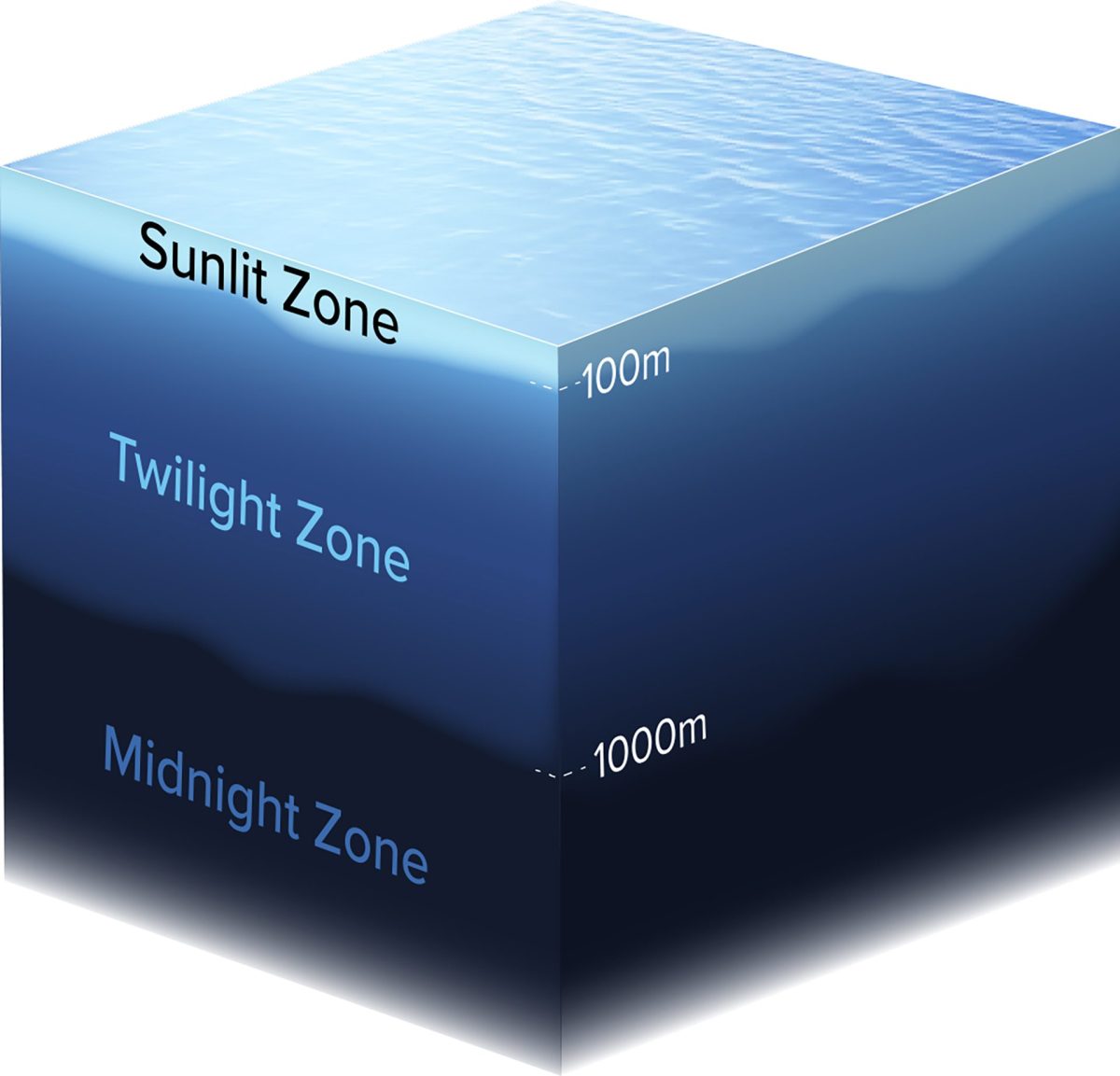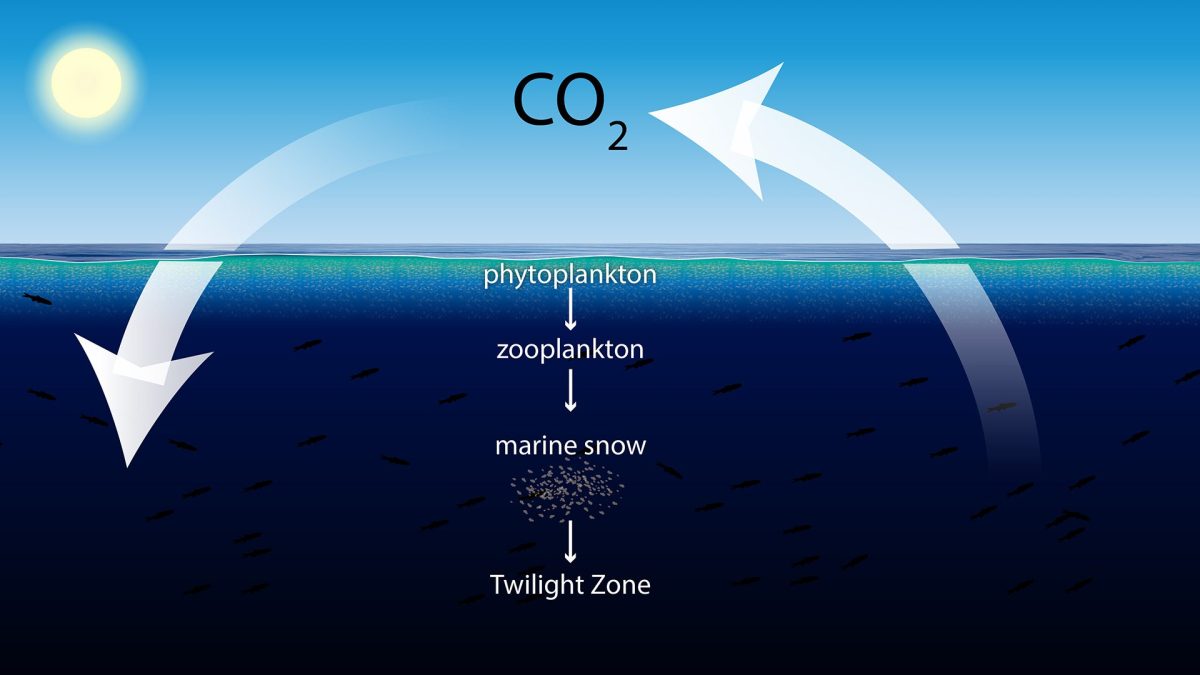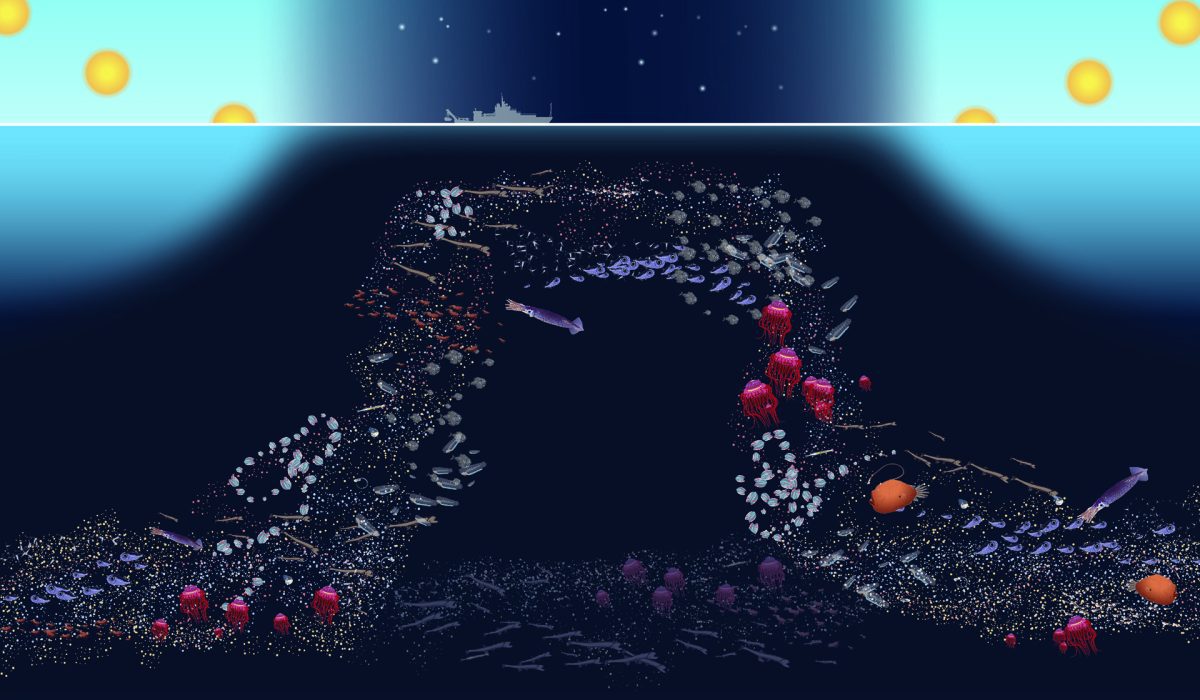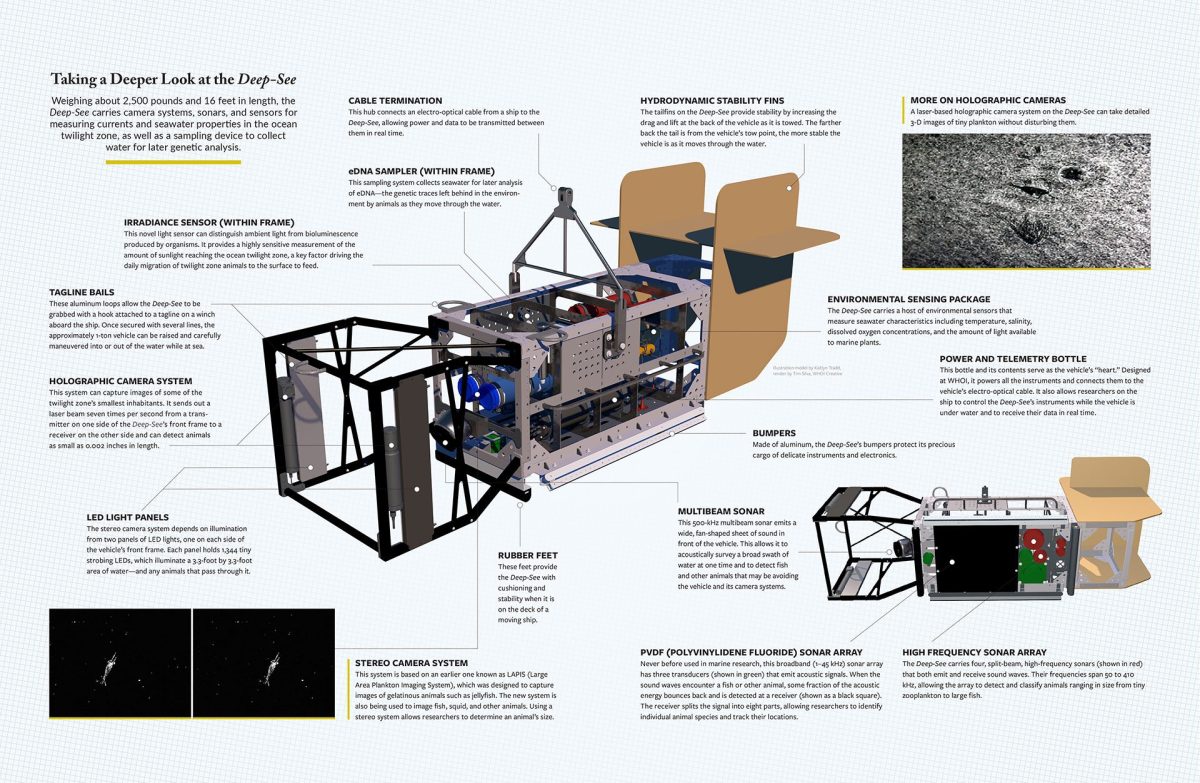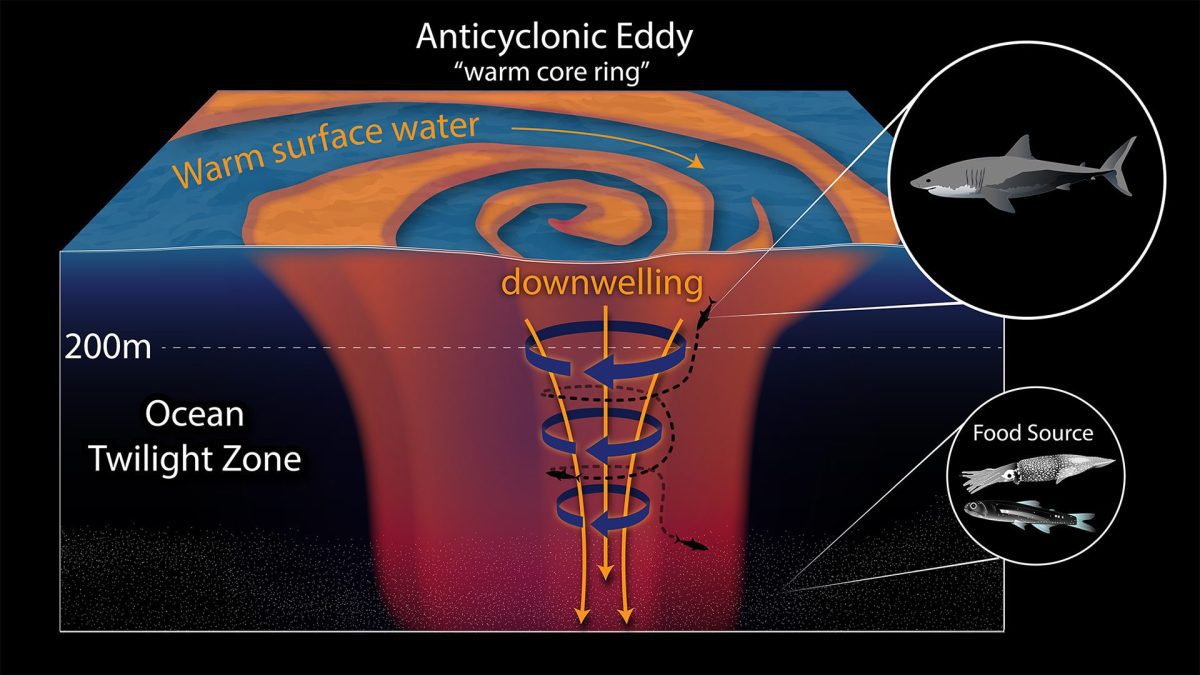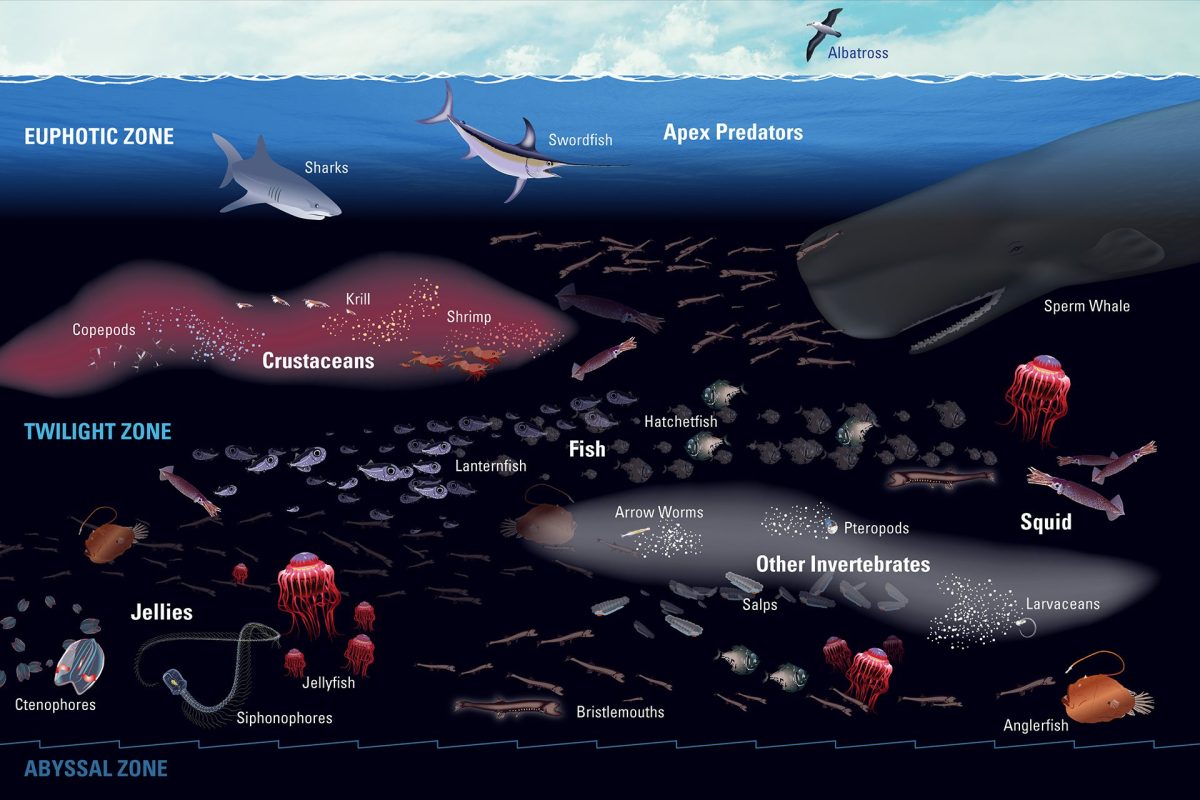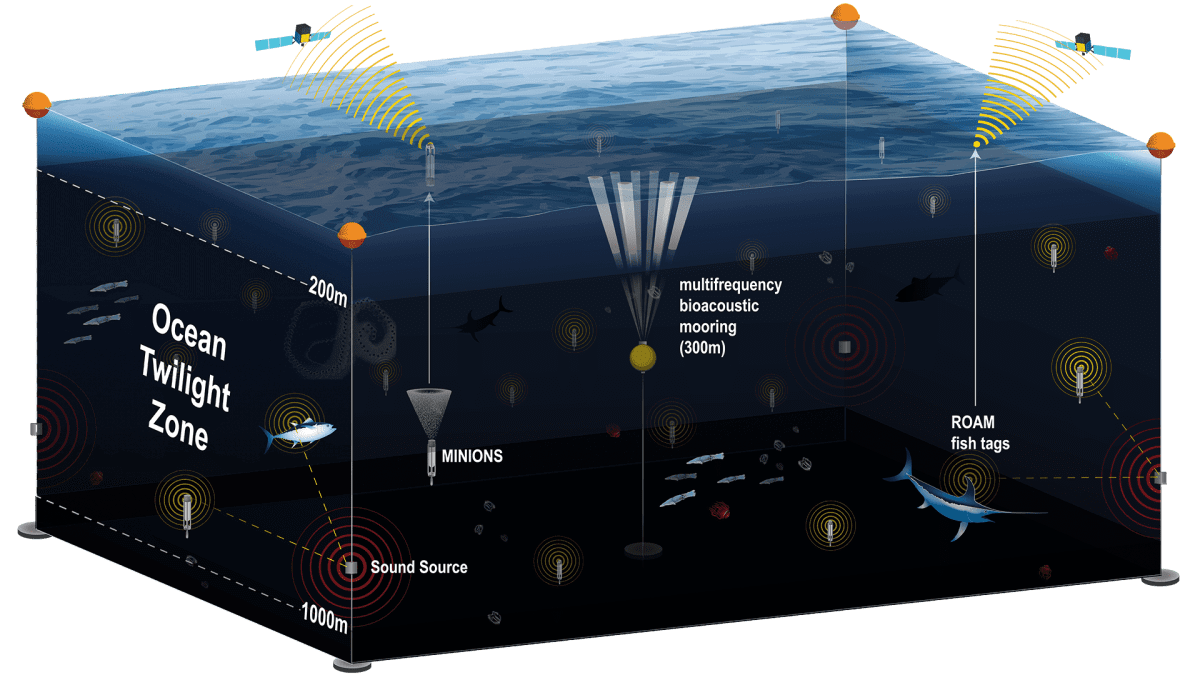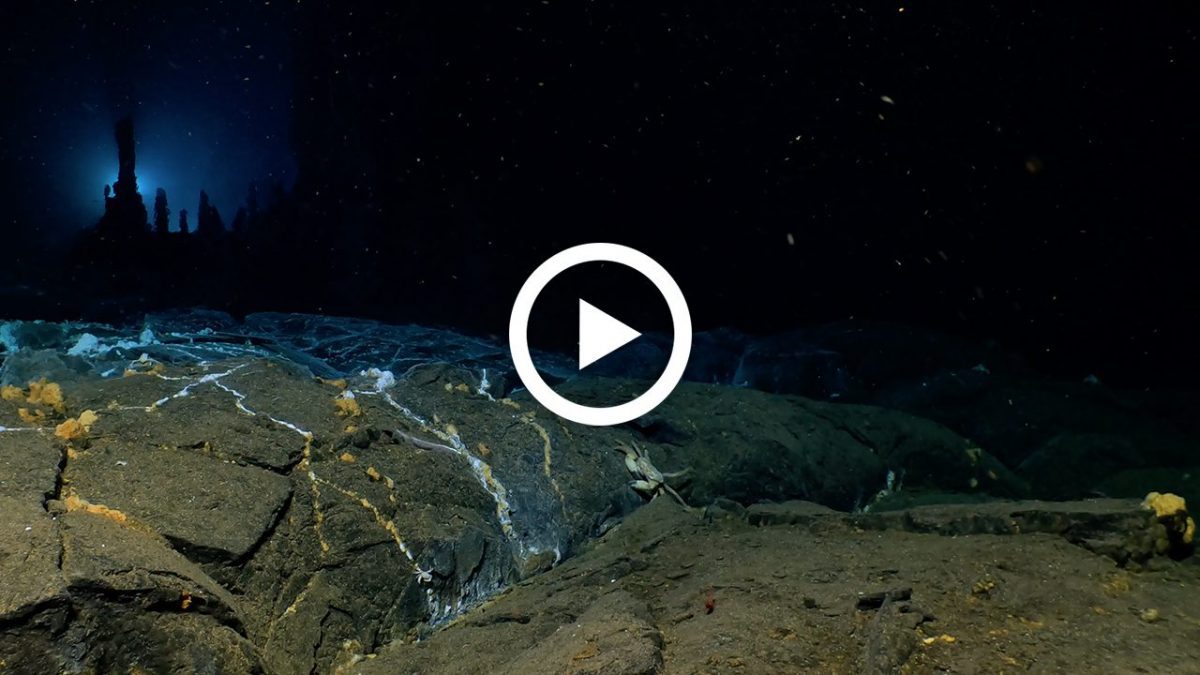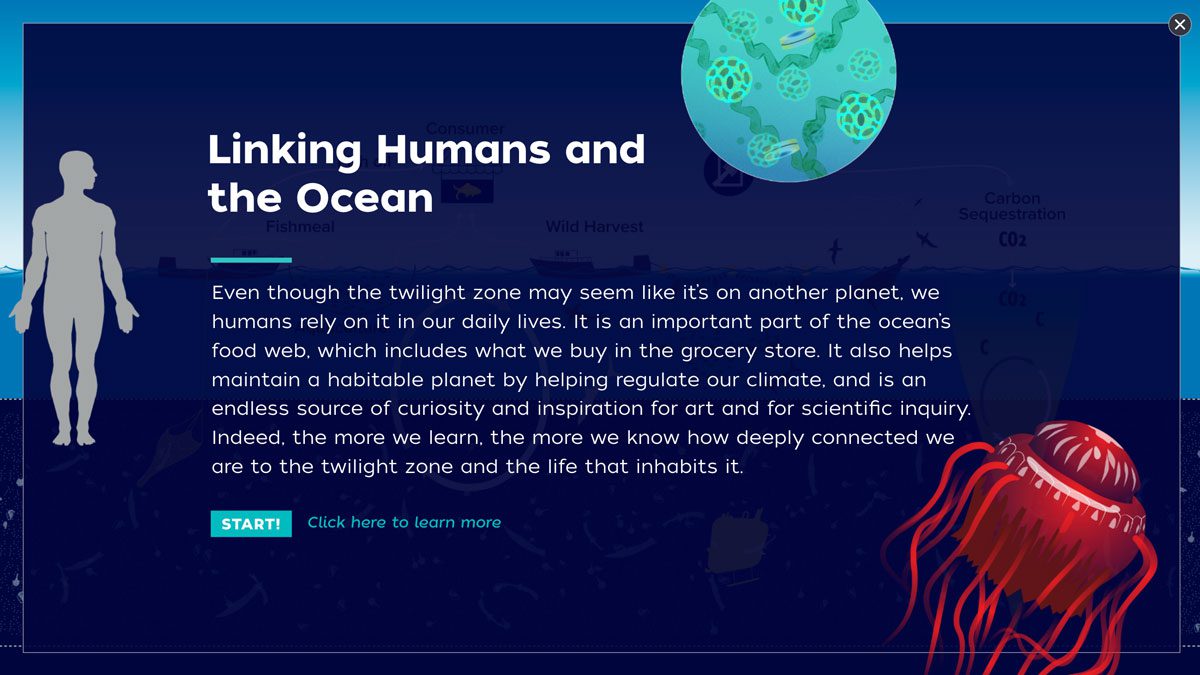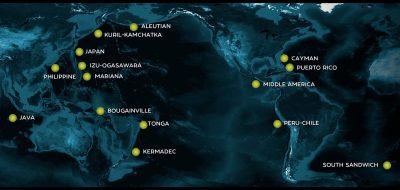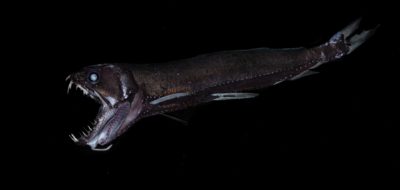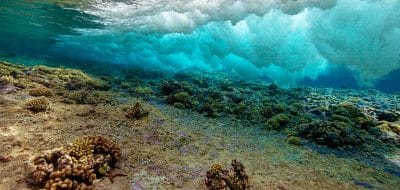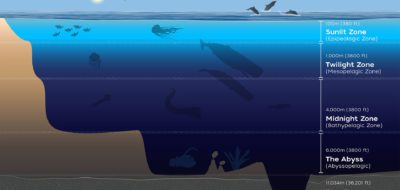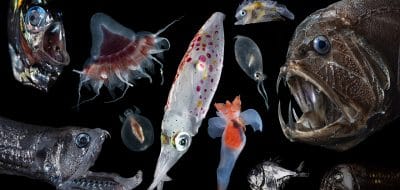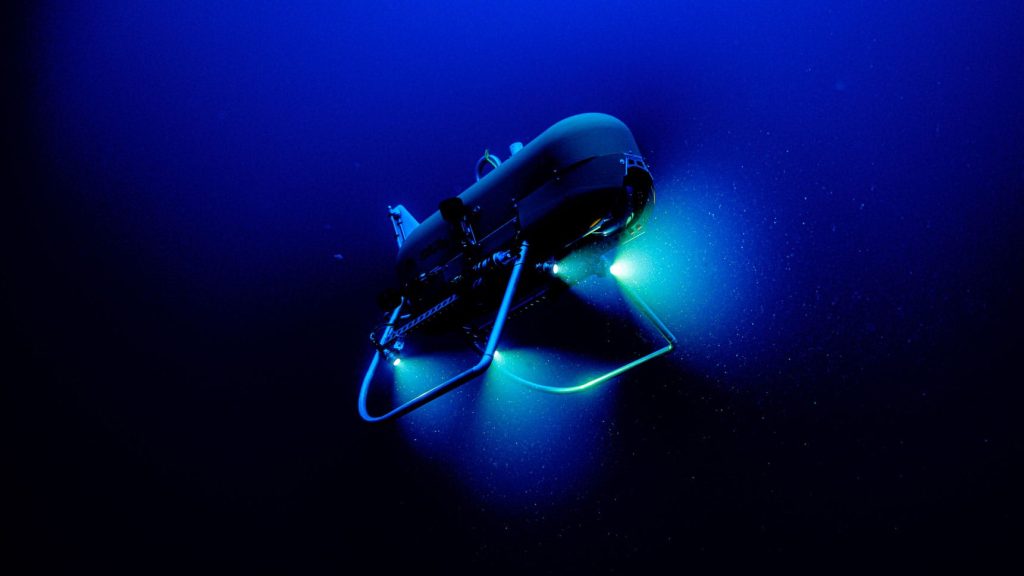
What is the abyssal zone?
Earth’s vast oceans run deep, bottoming out around 4,000 meters (13,123 feet) in most places, although trenches can form underwater canyons extending another 7,000 meters (22,965 feet). The seafloor and water column from 3,000 to 6,500 meters (9,842 to 21,325 feet) depth is known as the abyssal zone, or the abyss. Sunlight doesn’t penetrate to these depths, so the waters here are extremely dark, and the animals that live here often use bioluminescence to communicate.
The seafloor itself consists of large plains broken by trenches, sea mounts, and oceanic ridges. These features are the result of geologic activity. Trenches occur where one tectonic plate is subducted under another. Ridges are areas where new oceanic crust is formed by volcanic activity and two plates are moving apart. Sea mounts, individual underwater volcanoes, form when a magma from a hot spot in the mantle below pushes its way up through the crust. Repeated eruptions build ever-taller undersea mountains. When these eruptions persist long enough, mounts continue to grow, extending beyond the abyss into shallower waters, even creating volcanic islands when they break the water’s surface.
Why is it important?
The abyss is largely unexplored, but we know it contains animals found nowhere else on earth. It’s also abundant in minerals frequently used in manufacturing. The bottom at these depths accounts for about one-third of the planet’s seafloor. The sheer size of this area, coupled with the challenges of descending to depths where water pressure can reach 600 atmospheres, makes exploration difficult—but by no means impossible.
Researchers have been collecting samples and studying the abyssal seafloor since the 1960s and have discovered a surprising diversity of life at these depths. Entire communities of animals and microbes adapted to the high-pressure environment thrive in the dark depths, relying on limited carbon input from land or whale falls. Some gain energy from the chemicals released from mineral-rich, hydrothermal fluids venting at the seafloor. Despite the abyssal zone’s extreme depth and remote location, scientists are discovering that climate change is affecting communities, even at these levels.
The abyssal seafloor is also home to a variety of minerals valued by industry. Cobalt, nickel, aluminum, and manganese are used in items ranging from cars and wind turbines to phone and laptop batteries. Over millions of years, nodules containing relatively high concentrations of these minerals formed on the abyssal plain. Seamounts are often coated in cobalt-rich crusts, and seafloor vents may form mineral deposits rich in copper, zinc, lead, silver, and gold. A number of nations are currently exploring the possibility of mining these minerals from the seafloor.
What are ocean scientists doing to learn more about the abyss?
At the moment, there are a limited number of vehicles capable of descending to the abyssal seafloor. Some are autonomous underwater vehicles (AUVs). These are robotic, pre-programmed submersibles equipped with sensors, probes, and imaging systems that allow researchers to map and collect data in extreme underwater terrain, including trenches and volcano calderas.
Remote-operated vehicles (ROVs) are also used to explore parts of the abyss. They are typically tethered to and piloted from a ship via a fiber-optic cable which allows commands from the ship to reach the ROV and relays data and imagery to the pilots. These allow for real-time video and imagery, so pilots can see where the ROV is at any moment, which also allows them to direct the ROV to collect samples while at depth.
Human-occupied vehicles (HOVs) allow two or three people to descend in the submersible. HOVs can collect mid-column seawater samples, rest on the seafloor, or travel through rough geological features, making maps and collecting samples with its robotic arms along the way. WHOI’s HOV, Alvin, is currently undergoing upgrades that will allow it to descend to 6,500 meters. This will provide access to the abyssal seafloor and will allow Alvin to spend more time exploring once there. This is an essential upgrade that will facilitate new areas of research into the geology, chemistry, and biology of the abyssal zone.
Researchers are currently interested in a wide variety of aspects of the abyss. Although trenches, ridges, and other geologic features have been studied, there is still much to learn about them. Even less is known about the abyssal plains and the organisms found there. Some of the metallic nodules found on plains are home to creatures that live nowhere else. Understanding the needs of these organisms is essential if people are to begin mining the nodules from the seafloor. Evidence to date shows that some of these communities do not recover from disturbance, even decades later, and more information is needed to ensure that future mining efforts do as little damage to deep sea life as possible.
The role of microbes in deep-ocean systems is also under investigation. Microbes, including bacteria and Archaea, are capable of surviving at extreme pressures, temperatures, and in chemical environments that would be hostile to many organisms. Their ability to metabolize chemicals seeping from Earth’s interior is poorly understood but could lead to innovations on land. These microbes likely provide important ecosystem services to the deep ocean, and researchers are working to understand that role. This is essential information, since deep-sea mining would impact microbes as well as larger organisms, and harm to these microscopic communities could reverberate throughout our ocean systems.
International Seabed Authority. Polymetallic Sulphides. https://www.isa.org.jm/files/documents/EN/Brochures/ENG8.pdf. Accessed on February 25, 2021.
WHOI National Deep Submergence Facility. Science in the Abyss Online Workshops. https://ndsf.whoi.edu/alvin/workshop-alvin-in-the-abyss/ Accessed on February 23, 2021.
WHOI NDSF. Abyssal Plains & Seamounts workshop. https://ndsf.whoi.edu/workshop-abyssal-plains-seamounts/. Accessed on February 23, 2021.
WHOI NDSF. Trenches & Transforms workshop. https://ndsf.whoi.edu/trenches-transforms/. Accessed on February 24, 2021.
WHOI NDSF. Abyssal Technology & Societal Relevance workshop. https://ndsf.whoi.edu/abyssal-technology-societal-relevance/ Accessed on February 24, 2021.
WHOI NDSF. AUV Sentry. https://ndsf.whoi.edu/sentry/ Accessed on February 25, 2021.
WHOI NDSF. ROV Jason. https://ndsf.whoi.edu/jason/ Accessed on February 25, 2021.
WHOI NDSF. HOV Alvin. https://ndsf.whoi.edu/alvin/ Accessed on February 25, 2021.

